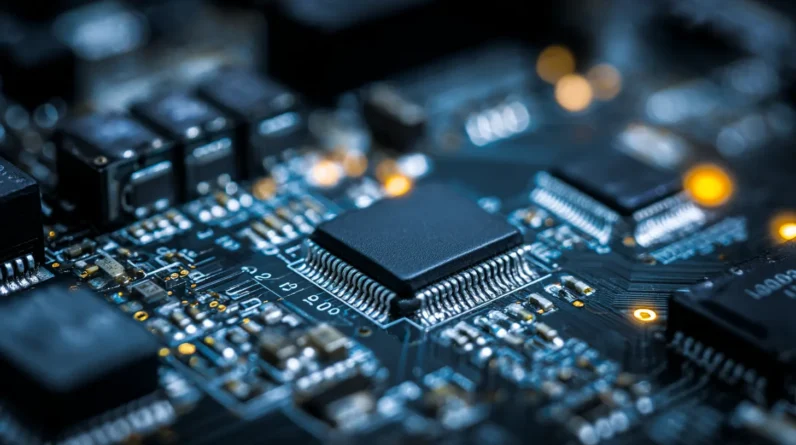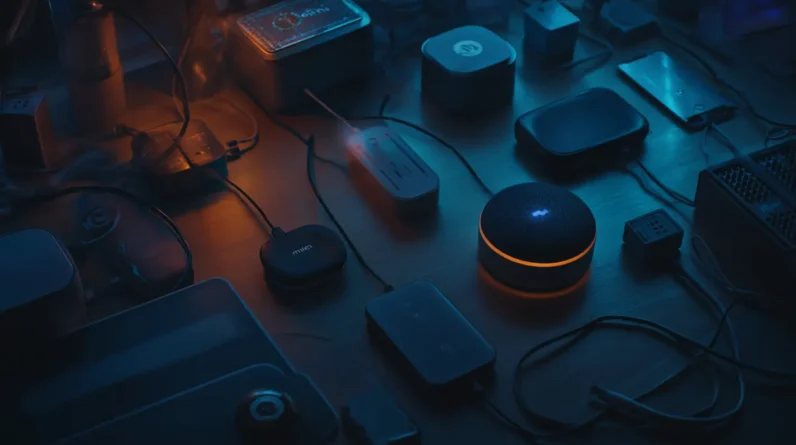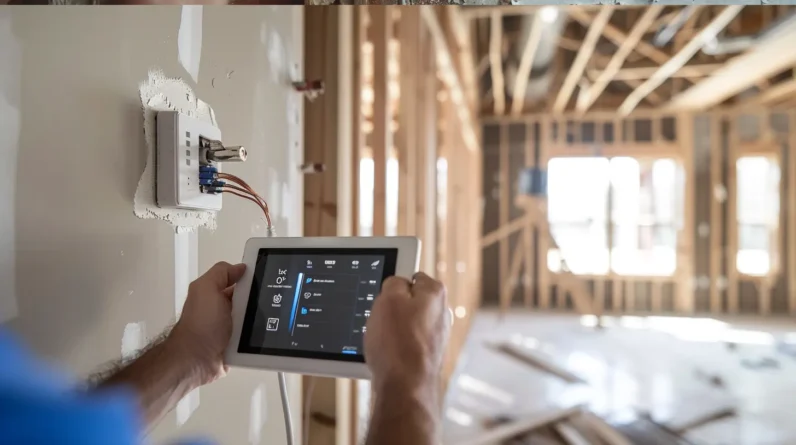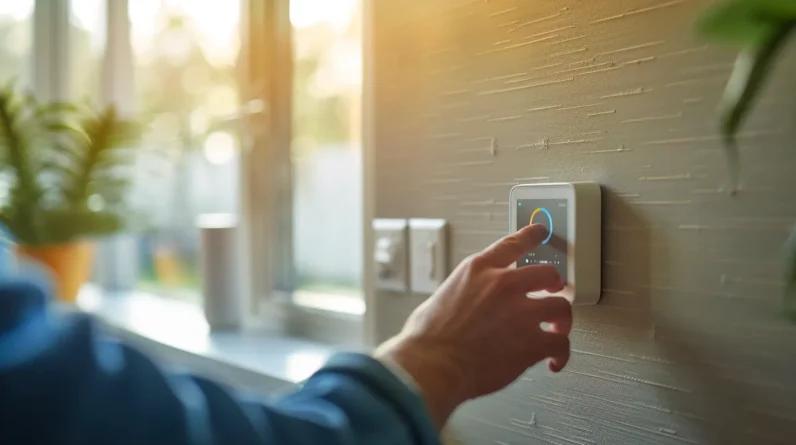
In today’s environmentally conscious world, finding ways to save energy and money is a top priority for many homeowners. One effective solution is the use of smart thermostats and lighting. These innovative technologies can optimize temperature settings and automatically adjust lighting based on occupancy, resulting in significant energy and cost savings. Smart thermostats offer remote temperature control, scheduling options, and energy-saving features such as learning user behavior and geofencing. On the other hand, smart lighting fixtures and bulbs consume far less energy than traditional incandescent bulbs and can be programmed to turn off when not needed. By investing in these smart technologies, homeowners can reduce their energy consumption, lower their utility bills, and contribute to a more sustainable future.
Key Takeaways
– Smart thermostats can reduce energy consumption by up to 20% and save homeowners 10-15% on heating and cooling costs.
– Smart thermostats can learn homeowners’ schedules and adjust temperature settings accordingly, optimizing energy usage.
– Smart thermostats can be controlled remotely through smartphone apps and provide real-time energy usage data.
– Smart lighting, when integrated with smart thermostats, can further enhance energy savings by automatically adjusting lighting levels based on natural light or occupancy.
Benefits of Smart Thermostats
One significant benefit of smart thermostats is their ability to reduce energy consumption by up to 20%. These devices have the capability to adjust temperature settings automatically, ensuring that your heating and cooling system operates efficiently. By optimizing energy usage, smart thermostats help you save both energy and money.
Smart thermostats are an essential component of a smart home. They are designed to integrate seamlessly with other smart home devices, allowing for centralized control and automation. This means that you can remotely adjust the temperature of your home, even when you are away, ensuring optimal comfort and energy efficiency.
When choosing a smart thermostat, it is recommended to look for ENERGY STAR certified appliances. These devices have undergone an independent certification process to verify their energy-saving capabilities. The ENERGY STAR label guarantees that the device meets specific energy efficiency standards, based on extensive field data.
Another feature that sets smart thermostats apart is the use of remote sensors. These sensors can be placed in different rooms to monitor temperature variations throughout your home. This data allows the thermostat to adjust its settings accordingly, ensuring that every room is comfortable while minimizing energy waste.
How to Choose the Right Smart Thermostat
To make an informed choice, it is crucial to consider key factors when selecting a smart thermostat for your home. Smart thermostats offer a variety of features that can help you save energy and money. One important factor to consider is the energy-saving capabilities of the thermostat. Look for smart thermostats that are ENERGY STAR certified, as they have been independently tested and proven to save energy.
Another important feature to look for is the ability to adjust the temperature automatically. Some smart thermostats offer geofencing technology, which uses your smartphone’s location to automatically adjust the temperature when you leave or arrive home. This can help you save energy by only heating or cooling your home when necessary.
Consider the ease of installation and use. Most homeowners can install smart thermostats in 30 minutes or less, so choose a thermostat that is user-friendly and comes with clear installation instructions.
When choosing the right smart thermostat, compare the features, customization options, automation capabilities, display quality, and app functionality. These factors will determine how well the thermostat integrates into your home and allows you to control and adjust the temperature to your liking.
Installation and Setup of Smart Thermostats
The first step in installing and setting up a smart thermostat is to gather all the necessary tools and equipment. Before beginning the installation process, make sure to turn off the power to the heating and cooling system at the circuit breaker. This will prevent any accidents or damage during the installation.
Carefully remove the existing thermostat from the wall and disconnect the wires. Take note of which wire is connected to each terminal as this information will be needed later.
Once the old thermostat is removed, mount the new smart thermostat onto the wall using the provided screws and anchors. Ensure that it is securely attached and level.
Connect the wires from the heating and cooling system to the corresponding terminals on the smart thermostat. Refer to the installation manual for guidance on wire connections.
After the wiring is complete, restore power to the heating and cooling system at the circuit breaker. The smart thermostat will power on and guide you through the setup process.
During the setup, you will be prompted to connect the smart thermostat to your home’s Wi-Fi network. Follow the instructions on the thermostat’s display to complete this step.
Once the setup is complete, you can begin programming the temperature settings and controlling your heating and cooling system remotely. Adjust the temperature settings according to your preferences to save energy and money.
Optimizing Energy Usage With Smart Lighting
Smart lighting systems offer advanced features that allow users to optimize energy usage and reduce electricity costs. By integrating smart lighting with other smart devices like thermostats, homeowners can create a comprehensive energy-saving solution for their homes. One of the key benefits of smart lighting is its ability to automatically turn off when not needed, resulting in significant energy savings. For example, ENERGY STAR certified smart light fixtures and bulbs use 90% less energy than incandescent bulbs. Additionally, smart lighting systems have a longer life expectancy compared to traditional bulbs, further reducing energy use and the need for frequent replacements.
Another way to optimize energy usage with smart lighting is to control the temperature in different areas of the house. By adjusting the lighting levels based on the temperature, homeowners can reduce energy consumption and save money. For instance, during the summer months, the lighting system can automatically dim or turn off lights in rooms that are not occupied, allowing the air conditioning to focus on cooling the occupied spaces. Similarly, during the winter, the lighting system can increase the brightness in rooms that receive natural sunlight, reducing the need for artificial lighting and minimizing energy use.
Saving Money With Smart Thermostats and Lighting
By integrating smart lighting with other devices like thermostats, homeowners can maximize their energy savings and reduce their electricity costs. Smart thermostats offer a convenient and cost-effective solution to save energy and money. These devices allow users to control and adjust the temperature of their homes automatically, optimizing energy usage and reducing wasted energy.
One of the key benefits of smart thermostats is their ability to learn and adapt to homeowners’ preferences and schedules. They use advanced algorithms and sensors to understand when residents are home and adjust the temperature accordingly. This ensures that energy is not wasted on heating or cooling an empty house.
Additionally, smart thermostats can be programmed to adjust the temperature based on the time of day or specific activities. For example, they can lower the temperature during sleeping hours or when everyone is out for the day. By optimizing temperature settings, homeowners can save energy and reduce their monthly utility bills.
When smart thermostats are integrated with smart lighting, energy savings can be further enhanced. Lighting can be automatically adjusted based on natural light levels or occupancy, ensuring that lights are not left on unnecessarily. This helps to reduce electricity consumption and extends the lifespan of light bulbs.
To maximize the energy savings and cost reduction potential of smart thermostats and lighting, field verification is recommended. This involves monitoring and analyzing energy usage data to identify areas for improvement and adjust settings accordingly. By combining smart technology with proactive monitoring and adjustment, homeowners can achieve significant energy savings and reduce their electricity costs.
Conclusion
Smart thermostats and lighting offer significant benefits for homeowners looking to save energy and money. By optimizing temperature settings and adjusting lighting based on occupancy, these technologies can reduce energy consumption and lower utility bills. With features such as remote control, scheduling, and energy-saving capabilities, smart thermostats and lighting provide practical and convenient solutions for improving energy efficiency in homes. Investing in these smart technologies can lead to long-term savings and a more sustainable future.







